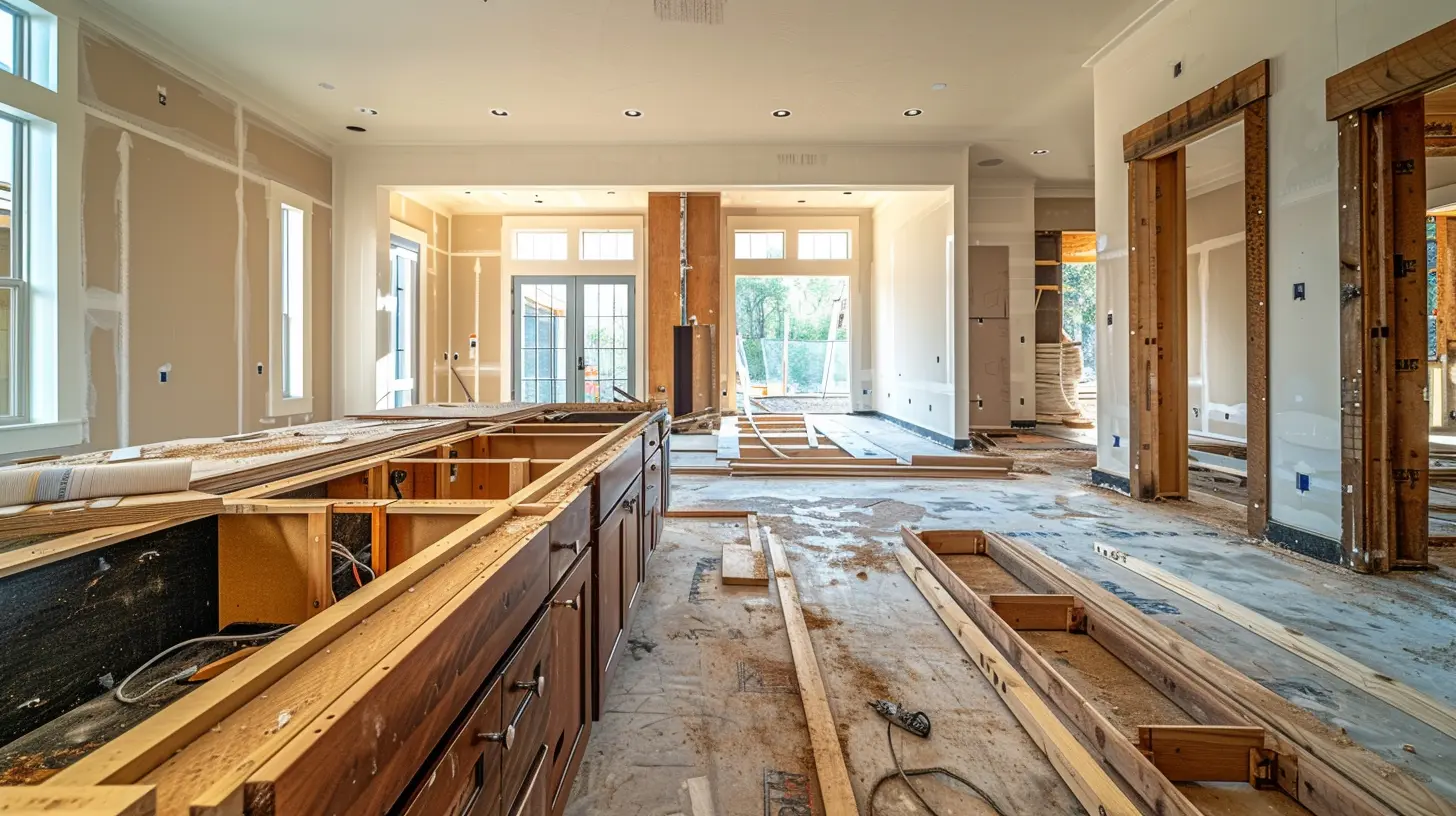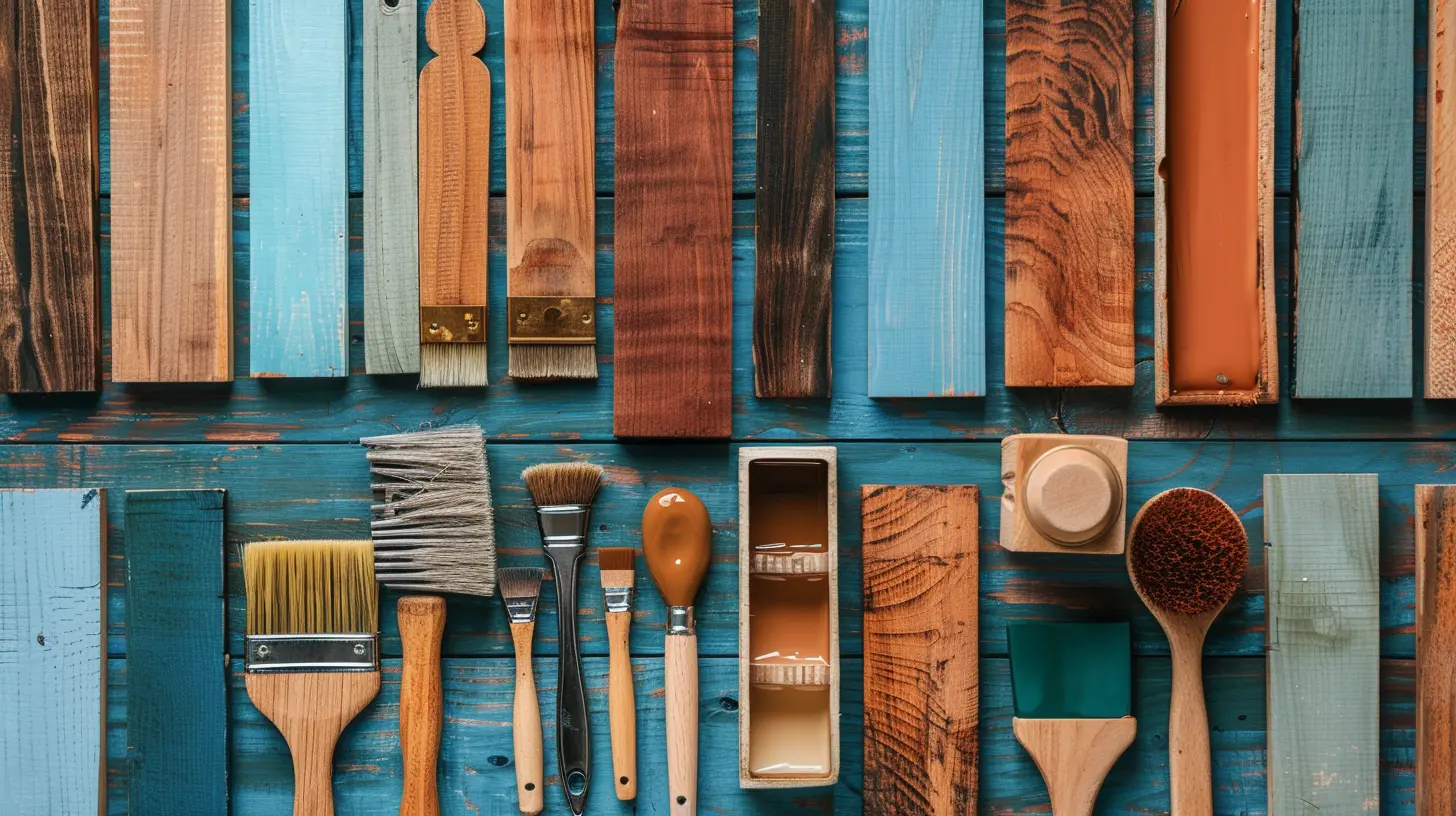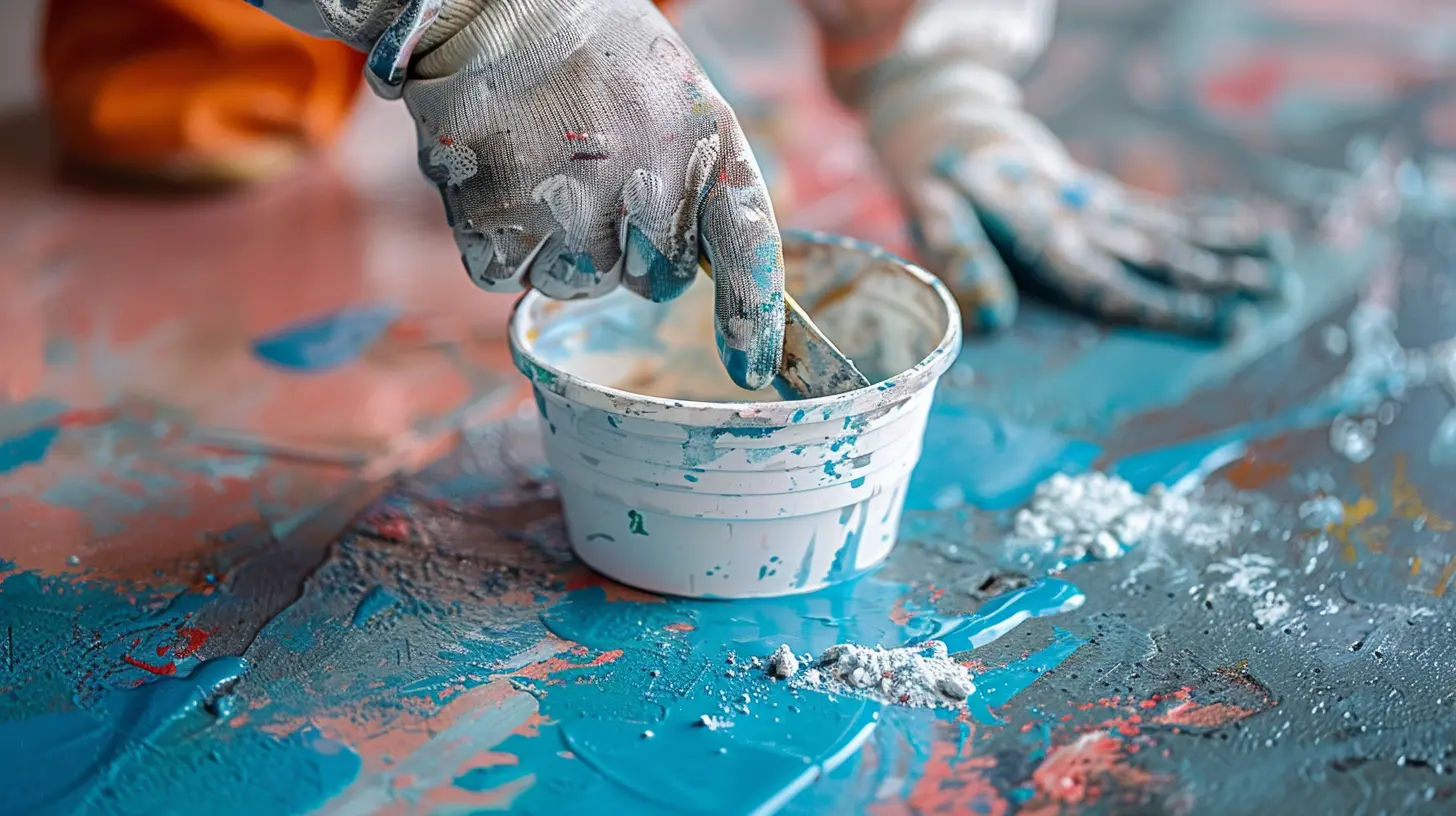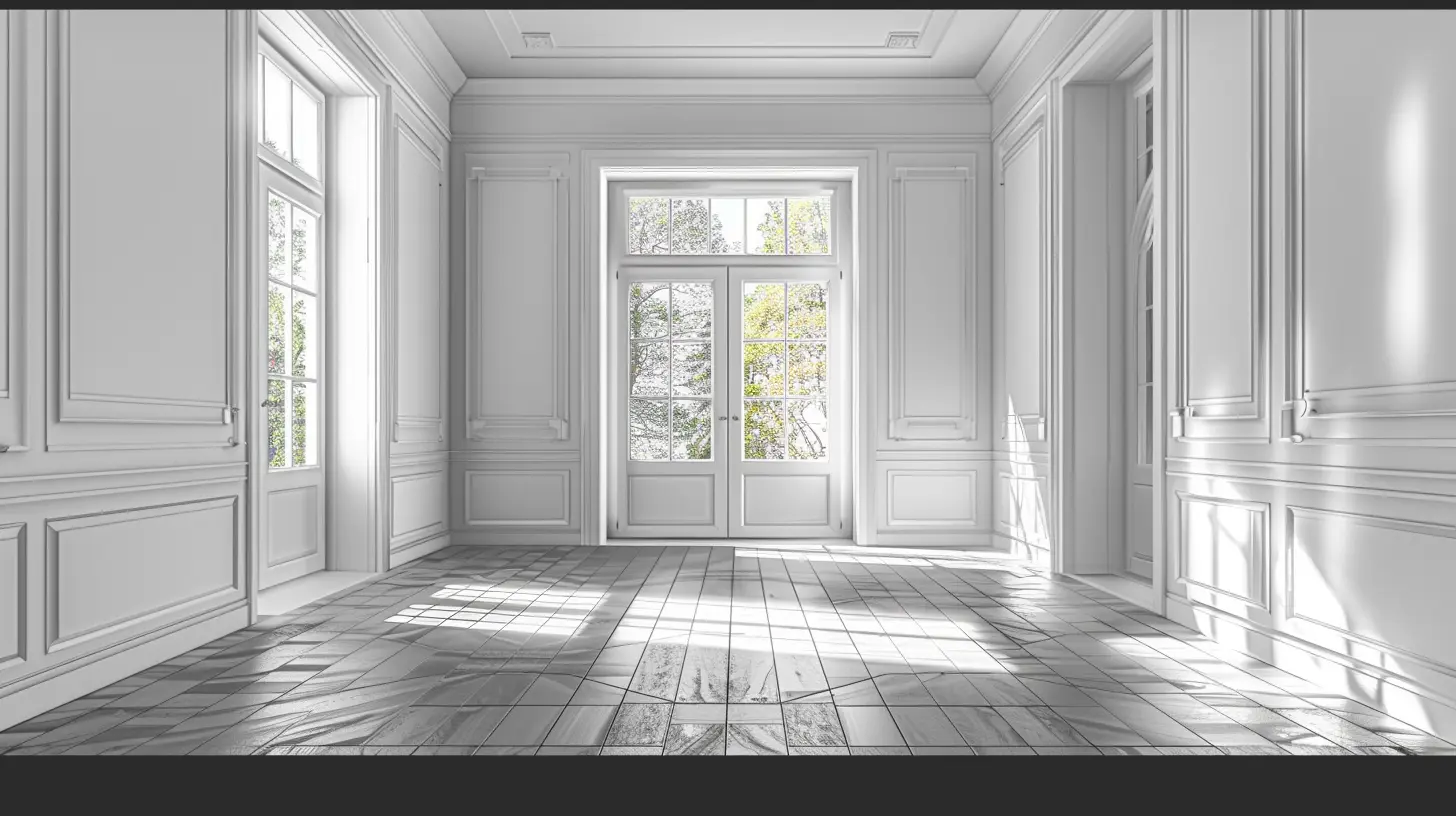Key Considerations for a DIY Home Renovation Project
24 August 2025
So, you're thinking about taking on a DIY home renovation project? That’s awesome! Renovating your home yourself can save you money, give you total creative control, and give you the satisfaction of transforming your space with your own hands.
But (and it’s a big but), diving headfirst into a renovation without proper planning can lead to costly mistakes, endless frustration, and half-finished projects that sit untouched for months.
Before picking up that sledgehammer, let’s break down the key considerations to ensure your DIY renovation is a success rather than a disaster. 
1. Setting a Realistic Budget
Money talks, and if you don’t listen carefully, your renovation could end up costing way more than you anticipated.Estimate Your Costs
Start by listing everything you need: materials, tools, permits, and even unexpected expenses. No matter how meticulous your plan is, something will cost more than you expect—so add a 20% buffer to your budget.Prioritize Your Renovations
Not everything needs to be done at once. Figure out which projects are essential and which can wait. You don’t want to blow your entire budget on aesthetics only to realize later that your plumbing needs a complete overhaul.Look for Cost-Saving Opportunities
- Buy materials in bulk.- Check out second-hand or reclaimed materials.
- Do the work in phases rather than all at once.
- Borrow or rent tools instead of buying them.

2. Planning and Design
A solid plan is the backbone of a successful DIY renovation. Without one, you’re just winging it—and that never ends well.Measure Twice, Cut Once
Before purchasing anything, take precise measurements of your space. A slight miscalculation can lead to ill-fitting materials, wasted money, and major headaches.Sketch It Out
Use a simple pencil sketch or a digital tool to visualize your project. This will help you determine if your ideas are even feasible before committing to them.Function Over Aesthetics
Sure, a Pinterest-worthy design is tempting, but functionality should always come first. Think about how you’ll use the space every day, not just how good it will look in photos.
3. Understanding Permits and Regulations
One of the biggest mistakes DIY renovators make is skipping the legal stuff.Do You Need a Permit?
Depending on the type of project, you may need a permit. Major structural changes, electrical work, and plumbing alterations often require official approval.Check Local Building Codes
Every area has its own construction codes. Ignoring them can result in failed inspections or, worst case scenario, having to tear down your work.HOA and Neighborhood Restrictions
If you live in a community with a Homeowners Association (HOA), make sure your project aligns with their guidelines. The last thing you want is to complete your dream renovation only to be met with fines and legal troubles.
4. Choosing the Right Tools and Materials
You wouldn’t try to cook a gourmet meal without the right ingredients, so why tackle a renovation without the right tools?Essential Tools for DIY Renovation
- Power drill- Circular saw
- Measuring tape
- Level
- Safety gear (gloves, goggles, mask)
Depending on your project, you may need additional specialized tools, so do your research beforehand.
Invest in Quality Materials
Cheap materials might save you money upfront, but they won’t last. Consider longevity and durability when making purchases.DIY vs. Professional Help
Be honest with yourself—some tasks require special expertise. If your renovation involves electrical rewiring, major plumbing, or structural changes, bringing in a professional might be the safer (and smarter) option.5. Time Management and Project Scheduling
DIY renovations can be time-consuming, especially if you’re juggling work and other responsibilities.Set a Realistic Timeline
What seems like a "weekend project" can sometimes turn into a month-long ordeal. Be honest about how much time you can dedicate to your renovation.Break It Down into Phases
Tackle your renovation in stages to make it more manageable. For example:1. Demolition & Prep Work
2. Structural Adjustments
3. Electrical & Plumbing
4. Drywall & Painting
5. Flooring & Finishing Touches
Avoid Tackling Too Many Projects at Once
It’s tempting to start multiple rooms at the same time, but doing so may leave you living in a construction zone for months. Focus on completing one project before moving on to another.6. Safety First - Always!
DIY renovations can be fun, but they can also be dangerous if you’re not careful.Wear Proper Safety Gear
Always wear gloves, goggles, and a dust mask—especially when dealing with power tools, chemicals, or demolition.Know Your Limits
If a task feels risky, stop and reassess. Electrical and plumbing work, for example, carry serious risks if done incorrectly. Sometimes calling in a professional is the best decision.Keep Your Workspace Clean
A cluttered workspace is an accident waiting to happen. Keep tools organized, clean up debris as you go, and ensure proper ventilation when dealing with chemicals or dust.7. Dealing with Unexpected Issues
Even the best-planned DIY renovations run into obstacles.Stay Flexible
Issues like hidden water damage, outdated wiring, or structural surprises can throw off your plans. Instead of panicking, adapt and find the most efficient solution.Budget for Surprise Costs
Always have an emergency fund. Unexpected repairs can add up quickly, and having extra funds set aside will prevent financial stress.Avoid Rushing
When things don’t go as expected, it’s tempting to cut corners. Don’t do it! Taking shortcuts can lead to bigger problems down the road.8. Adding the Finishing Touches
Once the heavy lifting is done, it's time to bring everything together.Paint and Decor
A fresh coat of paint can work wonders in transforming a space. Choose colors that complement your furniture and overall design.Lighting Matters
Good lighting can make or break a room. Consider natural light, fixture placement, and bulb type to set the right mood.Personal Touches
Now for the fun part—decor! Rugs, curtains, artwork, and plants bring personality into your renovated space. Make it uniquely yours.9. Evaluating the Final Outcome
Step back and assess your work. Does everything function properly? Do you love the results?Check for Any Needed Touch-Ups
Look for small imperfections that need fixing before calling it a wrap.Ensure Everything Is Safe and Functional
Double-check electrical work, plumbing connections, and structural stability to make sure everything is in good shape.Celebrate Your Hard Work!
Seriously, you did it! Reward yourself, take a breather, and enjoy your freshly renovated space.Final Thoughts
DIY home renovations are a fantastic way to personalize your space, but they require careful planning, patience, and a willingness to troubleshoot unexpected issues. By budgeting realistically, setting a solid plan, and prioritizing safety, you can successfully transform your home without unnecessary stress.So, are you ready to grab your tools and get started? Just remember: plan wisely, take your time, and enjoy the process!
all images in this post were generated using AI tools
Category:
Home RenovationAuthor:

Camila King
Discussion
rate this article
1 comments
Thalia Murphy
Embarking on a DIY home renovation? Beware: every nail and paint stroke can unveil hidden secrets of your home. What lies beneath those floorboards? Will your project breathe new life or awaken forgotten memories? Proceed with caution, for renovation is as much about discovery as it is about transformation.
September 5, 2025 at 2:44 AM

Camila King
Absolutely! Renovation is a journey of both discovery and creativity, so embrace the surprises while planning carefully for a successful transformation.


